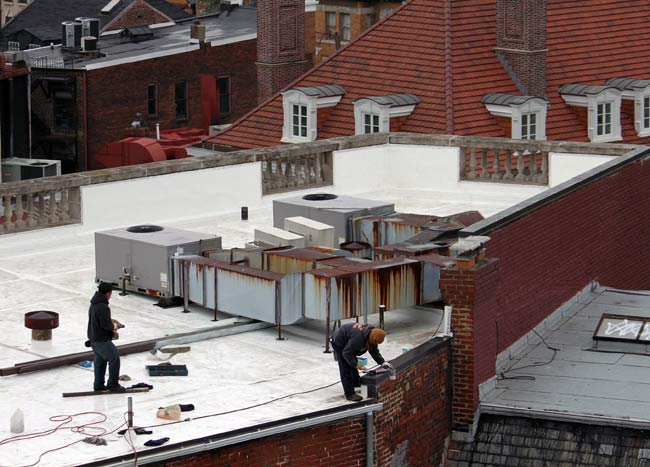White Roofs Could Reduce Urban Heating

To help combat global warming and urban heating, we might just need to paint the town white.
A new modeling study simulated the effects of painting roofs white to reflect incoming solar rays and found that it could help cool cities and reduce the effects of global warming.
The feasibility of such an initiative for cities remains to be seen, researchers caution, but the idea has been backed by U.S. Energy Secretary Steven Chu and other policymakers. And now there's some science behind the political support.
"Our research demonstrates that white roofs, at least in theory, can be an effective method for reducing urban heat," said Keith Oleson, the lead author of the study and a researcher at the National Center for Atmospheric Research (NCAR) in Boulder, Colo. "It remains to be seen if it's actually feasible for cities to paint their roofs white, but the idea certainly warrants further investigation."
Cities are particularly vulnerable to climate change because of a phenomenon known as the urban heat island effect. The asphalt roads, tar roofs and other artificial surfaces that permeate cities absorb heat from the sun, making temperatures in urban areas on average 2 to 5 degrees Fahrenheit (1 to 3 degrees Celsius) higher than in rural areas.
"It's critical to understand how climate change will affect vulnerable urban areas, which are home to most of the world's population," said NCAR scientist Gordon Bonan, a co-author of the study, which will be detailed in an upcoming issue of the journal Geophysical Research Letters.
Reflecting light
Sign up for the Live Science daily newsletter now
Get the world’s most fascinating discoveries delivered straight to your inbox.
White roofs could reflect some of that heat back to space and cool temperatures, because white surfaces reflect most of the light that hits them, while black surfaces absorb most of that light. (The amount of light that a surface reflects is known as its albedo.)
Oleson and his team used a newly developed computer model to simulate the amount of solar radiation absorbed or reflected by urban surfaces. The model simulations, which are idealized representations of cities, suggest that, if every roof were entirely painted white, the urban heat island effect could be reduced by about a third.
Such a reduction would cool the world's cities by an average of about 0.7 degrees F (0.4 degrees C), with the cooling influence more noticeable during the day, especially in the summer.
Real world
White roofs could also cool temperatures inside buildings, which could change the amount of energy used for space heating and air conditioning. This in turn could affect the consumption of fossil fuels, which generate many of the greenhouse gases responsible for Earth's warming. Depending on whether air conditioning or heating is affected more (as you might have to turn up the thermostat due to cooling temperatures), this effect could either magnify or partially offset the impact of the roofs.
"It's not as simple as just painting roofs white and cooling off a city," Oleson said.
The location of the city, the density of roofs and the construction of a building could also affect how much cooling would occur with white roofs.
The researchers also note that their results are a hypothetical look at cities and that the actual cooling effect in the real world could be slightly less, because dust and weathering would cause white paint to darken over time and parts of roofs would remain unpainted due to openings such as heating and cooling vents
- Top 10 Craziest Environmental Ideas
- Lawns May Contribute to Global Warming
- Video - Goldilocks and the Greenhouse
·










